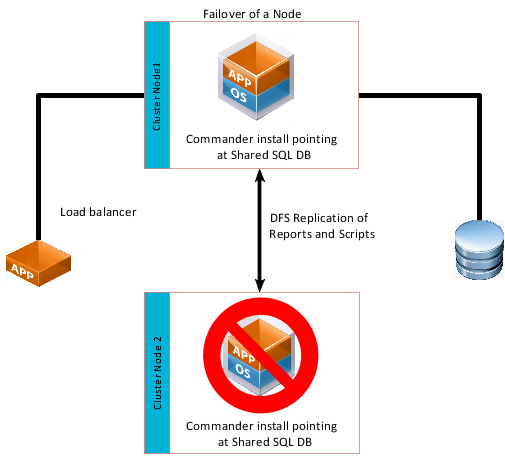Clustering Commander
Microsoft Distributed File System (DFS) replicates key directories between the nodes in real time, to ensure the passive node is fully synchronized with the active node. These directories contain binaries such as scripts, reports, and log files.
When the service on the active node fails, the failover follows this process:
- The passive node, through its monitoring, determines that the active node is no longer functioning.
- The passive node initiates a quarantine of the active node.
- The passive node becomes the active node. It remains the active node even when the other node comes back online.
- The newly active node executes a script to shut down the failed node.
There will always be a small amount of downtime as the passive node becomes active. When the failover is planned, you can use the Service Portal Message of the Day to notify users of an upcoming outage window. For more information, see Display a message of the day in the Service Portal.


